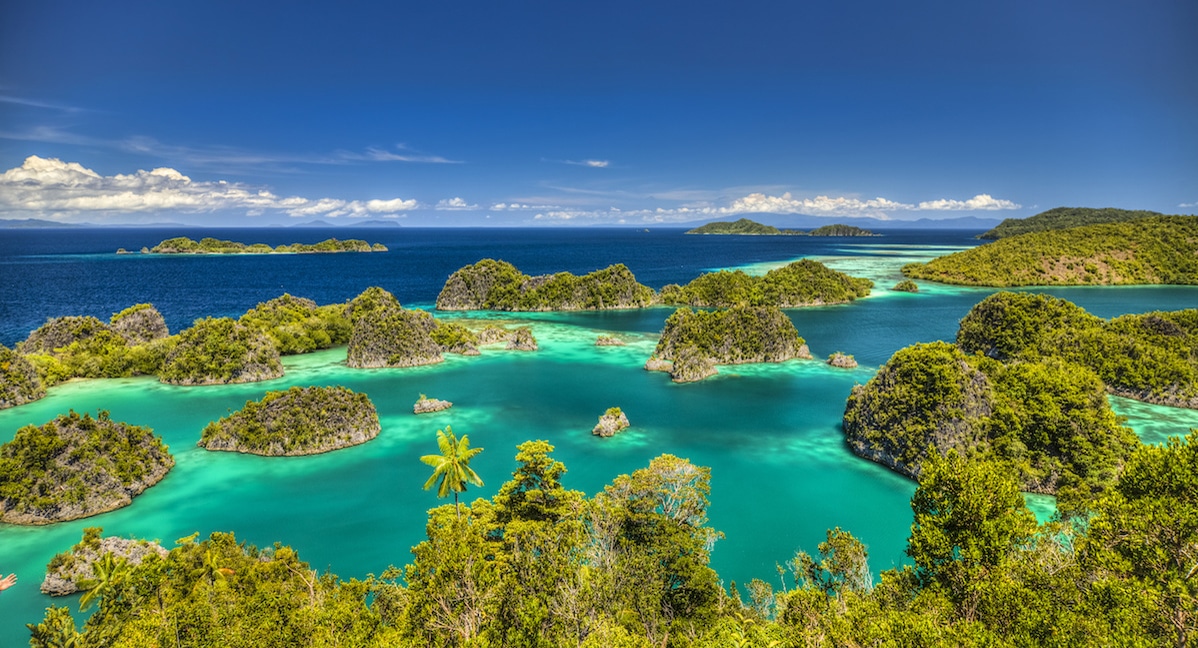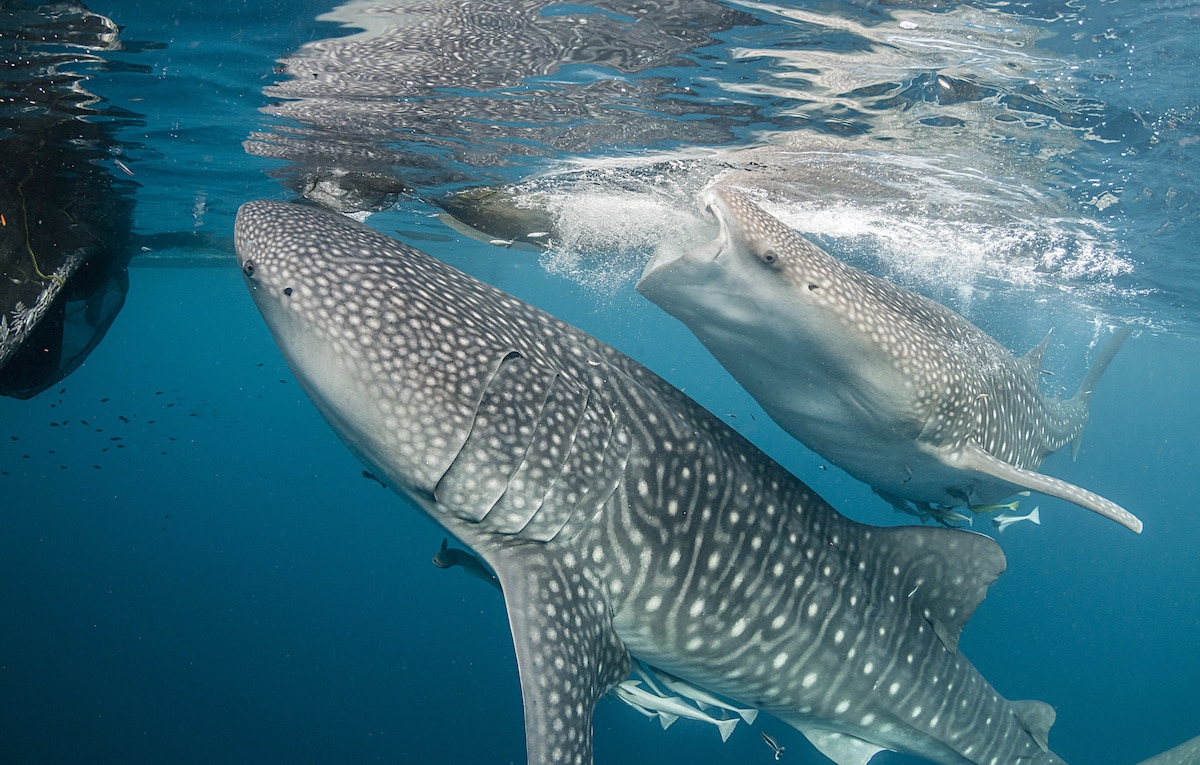News
5 Great Reasons to Visit Raja Ampat

Indonesia, the world’s largest archipelago, has four times more ocean than land and around 13,000 paradise islands to explore. It is one of the best dive destinations in the world to experience a variety of marine life and different dive areas, including the beautiful islands of Raja Ampat. The Raja Ampat season begins in November, so let’s take a look at some great reasons to visit this world-class dive destination.
1) Visit the Most Species-Rich Region on Earth
Raja Ampat is within the most biologically diverse marine region on earth; the coral triangle. This centre of global biodiversity comprises an area that includes Indonesia, Malaysia, Papua New Guinea, the Solomon Islands and Timor-Leste. A dive trip to Raja Ampat is an opportunity to witness a species diversity higher than anywhere else within the coral triangle.
Divers can enjoy an exceptional variety of species when exploring Raja Ampat; from large pelagics to a diverse array of macro life. Over 1500 fish species, 537 species of coral and almost 700 mollusc species have been identified at Raja Ampat so far. Divers can enjoy encounters with sharks, dolphins, mobula rays, manta rays, reef fish, turtles, whales and even non-stinging jellyfish at Misool. It is an ideal dive spot for macro photographers, who can enjoy the exceptional water visibility and light conditions at the colourful reefs. Pygmy seahorses, ghost pipefish and a variety of nudibranchs are often seen.
2) Swim with Whale Sharks, Walking Sharks, Wobbegongs & More
Shark fans can enjoy diving with a variety of sharks at Raja Ampat and the whale sharks of Cenderawasih Bay are not to be missed. This famous dive site is almost completely sheltered from the winds and features one of the best whale shark encounters in Indonesia. The fishermen give fish to the whale sharks to bring luck, and numerous whale sharks can be found there year-round. Cenderawasih Bay is also the location of a number of World War II wrecks, providing an assortment of dive sites.
Epaulette sharks, Indonesia’s famous ‘Walking Sharks’, can be found at Misool – one of the few places in the world where divers can see these sharks and witness their unique walking behaviour. Epaulette sharks can survive extended periods of time with little to no oxygen and use their pectoral fins to ‘walk’ between corals at low tide. They can even be seen walking along the seafloor during dives.
Blacktip and whitetip reef sharks are seen frequently at Raja Ampat and wobbegong sharks are found at Yangelo Island.
3) Sail Raja Ampat’s 1500 Paradise Islands
Imagine sailing amid forest-clad islands and bright turquoise waters, and you’re picturing one of the best ways to explore Raja Ampat. With over 1500 islands scattered across the ocean, you won’t be short of stunning landscapes and white-sand beaches to explore each day.
Indonesia has a rich history of sailing using their traditional phinisi boats; hand-hewn from exotic and rare woods. Phinisi boats were originally used to carry spices and textiles through the ancient spice route and modern phinisi boats are used for cruising and diving. There are a variety of phinisi boats to choose from in Indonesia, as well as sailing and motor yachts, a luxury floating hotel and steel hull boats. Each have their own advantages and are all ideal for a relaxed dive holiday cruising Raja Ampat’s many islands.
The Pearl of Papua is a beautiful luxury sailing liveaboard that offers Raja Ampat cruises all year. The steel-hulled Empress II is ideal for budget-friendly safaris, whilst the True North is the equivalent of a luxury floating hotel.
4) Dive Pristine Heat-Resistant Coral Reefs
Indonesia has some exceptional coral reefs that are thought to be resistant to the effects of coral bleaching. Raja Ampat is no exception to this and is home to more than ten times the number of hard coral species found in the Caribbean. Scientists have discovered many of the coral species found at Raja Ampat are more resistant to rising ocean temperatures than in other areas of the world. This resistance has left some of Raja Ampat’s reefs in almost pristine condition.
Bird Wall at Waigeo Island is a great dive site for coral bommies and Misool has been nicknamed ‘the kaleidoscope’ for its colourful coral reefs. Wofoh Island has one of the best coral wall dives in the area, with a reef wall covered in a colourful mixture of soft and hard corals.
5) Hang Out with Huge Groups of Manta Rays
There is something magical about swimming with manta rays as they glide through the water and Raja Ampat is a great place to dive with these ocean giants. Mantas are frequent visitors to Raja Ampat and can be seen in large groups as they pass over the reefs.
Manta Ridge has several cleaning stations, where divers can see up to 25 manta rays at any one time as they queue to use the cleaning stations. Mansaur is another good dive site for groups of mantas, plus turtles and a variety of fish life. November to April is the best time to visit to see manta rays in large numbers, as the warming water and plankton blooms attract them to the reefs.
This article was written by divers and writers at LiveAboard.com
 Discover liveaboard diving holiday solutions around the world at Liveaboard.com.
Discover liveaboard diving holiday solutions around the world at Liveaboard.com.
Gear News
Introducing the TR-80, IR-50 and CS-30 Regulators from DYNAMICNORD

Whether you are a beginner or a professional diver – with the three new main regulators from DYNAMICNORD, everyone will find their favourite regulator. They all look super stylish.
Excellent performance with the TR-80
Quality and performance are the be-all and end-all for regulators. It is not for nothing that the TR stands for Tec Reg. The innovative design of the TR-80 guarantees absolute reliability – even in ice-cold waters.

Perfect breathing effort at 0.8 J/l / certified for diving in waters below 10 degrees / structural design made of solid brass for best cold protection / membrane-compensated design with dry seal of the first stage / reduced exhalation effort thanks to optimized exhalation membrane and bubble deflector / adjustable Venturi (dive/predive) and adjustment knob for individual inhalation comfort / innovative design of the front cover prevents free-flow in strong currents or when diving with scooters / design made of sandblasted brass, matt chrome finish / 2 HP and 4 LP outlets / mouthpiece made of high-quality, anti-allergic silicone for maximum comfort.


Amazing underwater adventures with the IR-50
The IR-50 is the top regulator for advanced and experienced divers. Natural breathing is the essence of this regulator.

Ideal breathing effort at 0.8 J/l /certified for diving in waters below 10 degrees / compensated membrane / adjustable venturi (dive/predive) and adjustment knob for individual inhalation comfort/ outlet valve and deflector for minimum exhalation effort and reduction of bubbles on the face / design made of sandblasted brass, matt chrome finish / 2 HP and 4 NP outlets / mouthpiece made of high-quality, anti-allergic silicone for maximum comfort.


The Workhorse – our CS-30
For diving centres and diving beginners – the workhorse stands for strong construction, reliability and robustness. Perfect for your training.

Optimal breathing effort at 0.8 J/l /recommended for diving in waters above 10 degrees / non-compensated piston / adjustable venturi (dive/predive) / outlet valve and deflector for minimum exhalation effort and reduction of bubbles on the face / design made of sandblasted brass, matt chrome finish / 1 HP and 3 NP outlets / mouthpiece made of high-quality, anti-allergic silicone for maximum comfort.


Octopus OP-30
The OP-30 is the ideal addition to all DYNAMICNORD regulators. It is identical in construction to the CS-30.

The TR-80, IR-50, CS-30 (DIN & INT) regulators and the Octopus OP-30 are available from DYNAMICNORD dealers and in the online store.
DYNAMICNORD – Your Outdoor Companion.
Marine Life & Conservation
Paul Watson Released as Denmark Blocks Japan’s Extradition Bid

Renowned anti-whaling activist Paul Watson has been released from custody in Greenland after spending five months in detention. Denmark’s Justice Ministry rejected Japan’s request for his extradition, citing insufficient guarantees that his time already served in custody would be credited against any potential sentence.
The 74-year-old Canadian-American was arrested on July 21 in Nuuk, Greenland’s capital, when his ship docked to refuel. His arrest was based on a 2012 Japanese warrant related to a 2010 encounter in Antarctic waters. Japan alleged Watson obstructed operations and caused damage to a whaling research ship during efforts to disrupt illegal whaling. Watson has consistently denied these claims, maintaining his commitment to marine conservation.
Denmark, which oversees extradition matters for Greenland, concluded that while the legal conditions for extradition were met, the lack of assurances from Japan regarding time-served credit made extradition untenable.
In a video shared by his foundation, Watson expressed gratitude and relief, saying, “After five months, it’s good to be out… and good to know they’re not sending me to Japan.” He added that the most difficult part of his time in custody was being separated from his two young sons.
Watson is a pioneering figure in marine conservation, known for founding the Captain Paul Watson Foundation in 2022 after decades of activism with the Sea Shepherd Conservation Society. His bold efforts to defend marine life have earned him widespread support, including from celebrities and conservationists. His work has also been featured in the acclaimed reality TV series Whale Wars.
Watson’s lawyer, Jonas Christoffersen, praised the decision, stating, “We are happy and relieved that Paul Watson is now free.” He added that Watson is eager to reunite with his family and continue his vital work.
The arrest occurred while Watson’s vessel, the M/Y John Paul DeJoria, was en route to the North Pacific with a team of 26 volunteers to intercept a Japanese whaling ship. His foundation described the arrest as politically motivated and emphasized that Watson’s actions were focused on ending illegal whaling practices.
Japan resumed commercial whaling in 2019 after leaving the International Whaling Commission, asserting that whale meat is a cultural tradition. Conservationists, however, continue to challenge these practices, highlighting their impact on marine ecosystems.
Despite the challenges, Watson remains steadfast in his mission to protect marine life and bring attention to whaling practices. His dedication to ocean conservation has made him a globally respected advocate for the environment.
-

 News2 months ago
News2 months agoIconic SS United States to become the World’s Largest Artificial Reef
-

 News3 months ago
News3 months agoBook Review – 52 Assignments: Underwater Photography
-

 Gear News3 months ago
Gear News3 months agoDYNAMICNORD – New German diving brand enters the British market
-

 News3 months ago
News3 months agoExploring Cenote El Pit: A Diver’s Dream
-

 Gear News3 months ago
Gear News3 months agoTry BARE drysuits (and maybe even win one!) this Friday with Sea & Sea at North West Dive Fest
-

 Marine Life & Conservation3 months ago
Marine Life & Conservation3 months agoBook Review: Coral Triangle Cameos
-

 Blogs2 months ago
Blogs2 months agoDive the Egyptian Red Sea this Autumn with Regaldive
-

 News3 months ago
News3 months ago2024 Ocean Art Underwater Photo Competition Announced


















